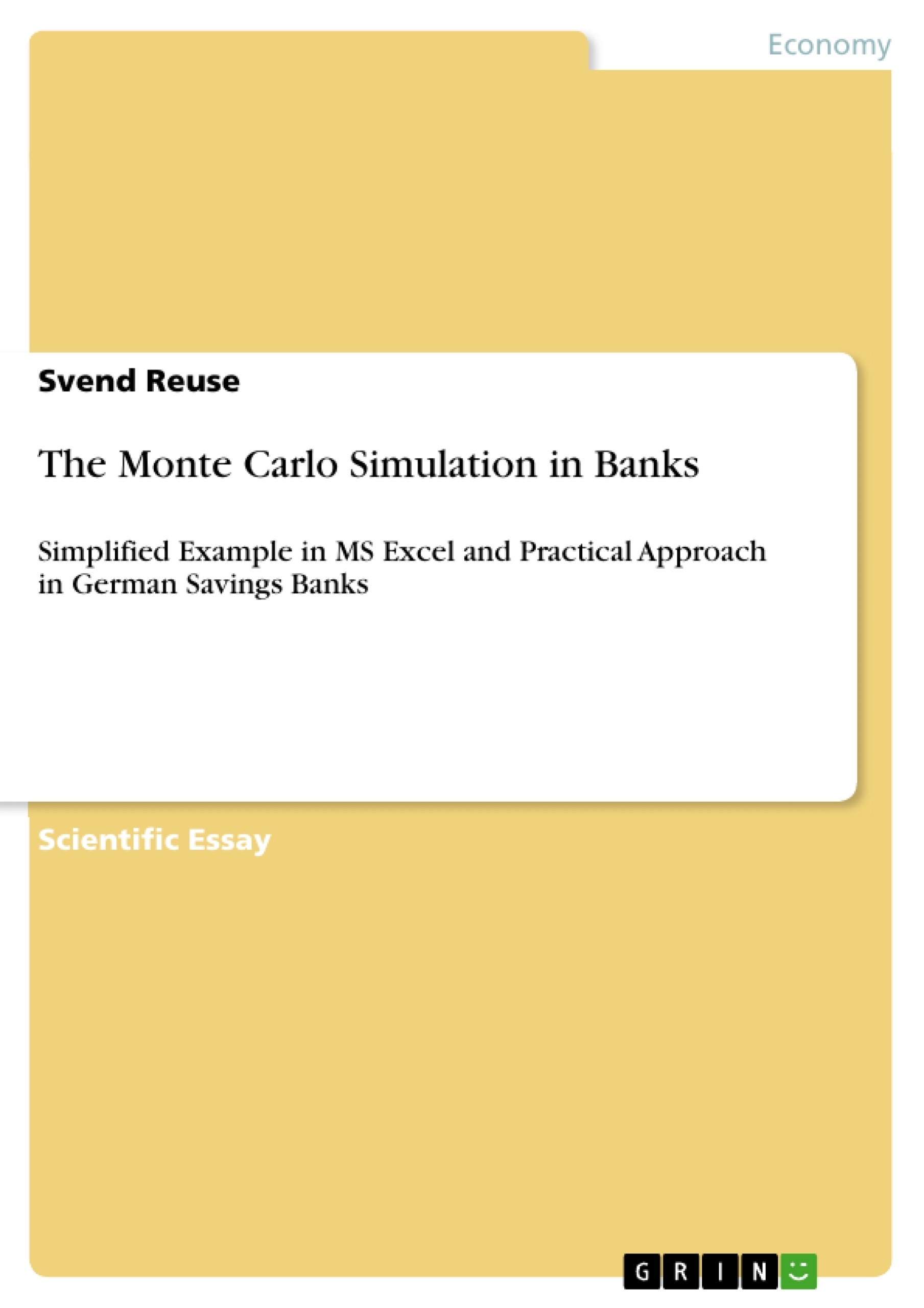This article deals with the actual status quo of measuring credit risk in the German banking sector. It defines the kinds of VaR approaches and discusses the basics and models for quantifying credit risk. The VaR tools used in the German banking sector to measure credit risk are analysed in a next step. Further, the complex character of the Monte Carlo approach is explained at the example of an Excel tool. The outlook of this article consists of a critical analysis of the efficiency in the context of the actual financial crisis in Germany.
The paper extends the basic aspects of three former publications of the author, published in the specialized banking magazine Bankpraktiker 07-08.2006, pp. 366 – 371, the Conference paper for the ESF Conference on 25.06. – 26.06.2008 in Brno, Czech Republic, pp. 325 – 333 and the ControllerMagazin 05.2009, pp. 84 – 92.
Table of Content
- Annotation
- Key words
- Table of Content
- List of Figures
- List of Abbreviations
- 1. Introduction
- 1.1 Reasoning and Motivation
- 1.2 Structure of the Article
- 2. Risks in the Banking Sector
- 2.1 Definition of Risk
- 2.2 Structuring Risks in the Banking Sector
- 3. Measuring Risk with the Value at Risk
- 3.1 Definition of the Value at Risk
- 3.2 Meaning of the VaR for Risk Management in Banks
- 3.3 Structuring the Types of VaR Models
- 4. Modelling Credit Risk
- 4.1 Determinants for Modelling Credit Risk
- 4.2 Combining the Input Factors
- 4.3 Distribution of Credit Risk
- 5. The Monte Carlo Simulation
- 5.1 Basic Idea of the Monte Carlo Simulation
- 5.2 Migration Metrics by Random Scenarios
- 5.3 Discussing Advantages and Disadvantages of the Monte Carlo Approach
- 6. Development of a Simplified Monte Carlo Tool at the Example of a Bond Portfolio
- 6.1 Describing the Model
- 6.2 Setting up the Excel Sheet
- 6.3 Programming the Monte Carlo in Excel VBA
- 6.4 Analysing and Interpreting the Results
- 7. Monte Carlo Models in the German Banking Sector
- 7.1 General Overview
- 7.2 CreditPortfolioView: The Solution of the Savings Bank Sector
Objectives and Key Themes
This article explores the current state of credit risk measurement in the German banking sector, focusing specifically on the Monte Carlo approach. It aims to provide a practical understanding of the Monte Carlo simulation and its implementation using an easy-to-follow example in MS Excel. The article also discusses the use of Monte Carlo models in the German banking sector, specifically highlighting the CreditPortfolioView solution for savings banks.
- Measuring credit risk in the German banking sector
- Understanding the Monte Carlo simulation for credit risk evaluation
- Practical application of the Monte Carlo approach using MS Excel
- Analysis of Monte Carlo models used in the German banking sector
- Critical assessment of the efficiency of Monte Carlo approaches in the context of the financial crisis
Chapter Summaries
The article begins by introducing the significance of credit risk evaluation in German banks, highlighting the need for accurate and sophisticated tools due to increased investment in credit risk and recent financial losses. The article then delves into the general concept of risk and its various forms within the banking sector. The third section provides a comprehensive definition of Value at Risk (VaR) and its importance in risk management, followed by a discussion of different VaR models.
Chapter 4 examines the key determinants for modeling credit risk, exploring how these factors are combined and how credit risk is distributed. The following chapter, Chapter 5, focuses on the Monte Carlo simulation, explaining its underlying principles and comparing its advantages and disadvantages. The article then provides a practical demonstration of the Monte Carlo approach using a simplified MS Excel tool, breaking down the model, its setup, and its programming.
Chapter 7 explores the application of Monte Carlo models in the German banking sector, specifically reviewing the CreditPortfolioView solution widely used by German savings banks.
Keywords
This article explores the core concepts of Value at Risk (VaR), Monte Carlo simulation, and credit risk in the German banking sector. It examines the application of these concepts in practical settings, using the CreditPortfolioView solution as an example of a prominent tool used by German savings banks. The article further discusses the efficiency of these approaches in the context of the recent financial crisis, providing a critical analysis of their strengths and weaknesses.
- Quote paper
- Svend Reuse (Author), 2010, The Monte Carlo Simulation in Banks , Munich, GRIN Verlag, https://www.grin.com/document/152589



